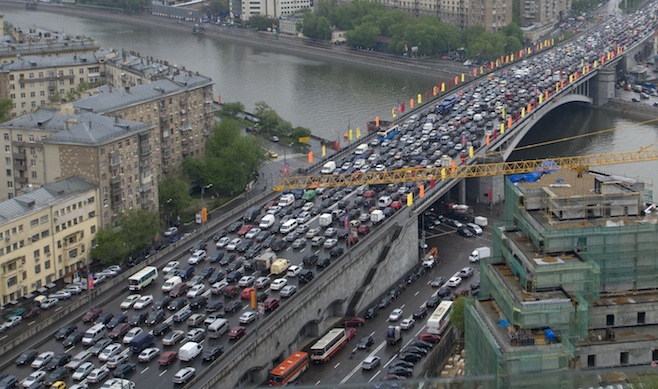
Uploaded on 2017-03-05 by Anna A.
I would like to share my thoughts on the stocks and flows in Moscow city in Russia. Being the capital of the country with more than 12 million inhabitants, it daily accumulates no less than 3-5 million people from Moscow agglomeration who work in the city. This situation of unequal distribution of workplaces in Moscow region causes traffic jams and congestion — which, using the concept, can be displayed as traffic flow (you may see the traffic jam image provided by The Moscow Times newspaper). Apart from that, there is also a flow of day-night densities in Moscow city districts. As most of the businesses are located within the central part, but the share of citizens who actually lives there is critically low, we may observe an interesting pattern – if to map actual people concentration in the centre throughout the hours of the day, it will be seen, that the day's density is much higher than the night's. This finding may be of a particular interest to urban designers in neighbourhood development and planning. Another flow to mention is the flow of goods – food, being a part of an everyday supermarket supply chain, as well as other things like materials for construction, clothes to be delivered to the department stores or private parcels. This flow of goods is very important to maintain the life of the city and its residents; moreover, being summed up, the delivery market generates huge financial flows improving the city's well-being.